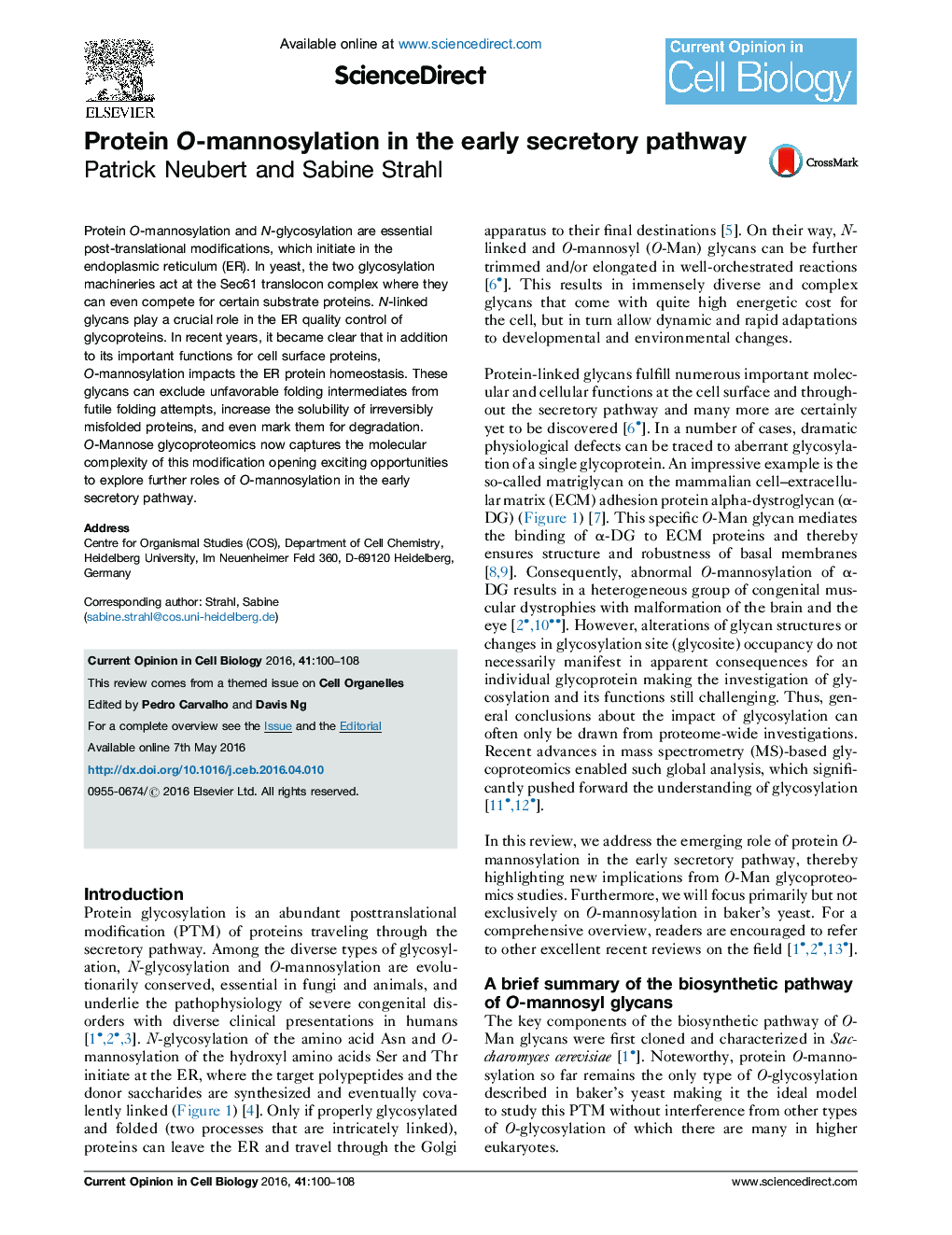| کد مقاله | کد نشریه | سال انتشار | مقاله انگلیسی | نسخه تمام متن |
|---|---|---|---|---|
| 2169678 | 1549465 | 2016 | 9 صفحه PDF | دانلود رایگان |

• O-Mannosylation initiates at the translocon complex in the endoplasmic reticulum (ER).
• O-Man glycans can mark and exclude unfavorable folding intermediates (UPOM).
• O-Mannosylation is an integral part of the interlinked ER protein homeostasis network.
• New insights from high throughput MS-based glycoproteomics are discussed.
Protein O-mannosylation and N-glycosylation are essential post-translational modifications, which initiate in the endoplasmic reticulum (ER). In yeast, the two glycosylation machineries act at the Sec61 translocon complex where they can even compete for certain substrate proteins. N-linked glycans play a crucial role in the ER quality control of glycoproteins. In recent years, it became clear that in addition to its important functions for cell surface proteins, O-mannosylation impacts the ER protein homeostasis. These glycans can exclude unfavorable folding intermediates from futile folding attempts, increase the solubility of irreversibly misfolded proteins, and even mark them for degradation. O-Mannose glycoproteomics now captures the molecular complexity of this modification opening exciting opportunities to explore further roles of O-mannosylation in the early secretory pathway.
Figure optionsDownload high-quality image (160 K)Download as PowerPoint slide
Journal: Current Opinion in Cell Biology - Volume 41, August 2016, Pages 100–108